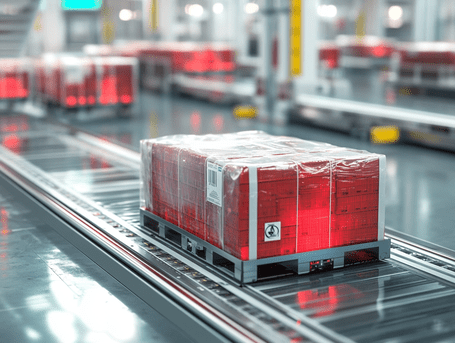| Core Principle | Utilizes principles of quantum mechanics (superposition, entanglement, quantum tunneling) to evaluate multiple supply chain configurations simultaneously, exponentially increasing computation speed for complex optimization problems. | Leverages algorithms such as deep learning, reinforcement learning, and neural networks to identify patterns in historical data, providing predictive insights and prescriptive optimization strategies. |
| Computational Capability | Quantum computing can process exponentially more combinations of variables in parallel due to qubits’ ability to exist in multiple states, enabling solutions for NP-hard problems that are infeasible for classical computers. | Machine learning models rely on classical binary computing with deterministic pathways, making the computation of high-dimensional, large-scale problems time-intensive and less efficient as compared to quantum computing. |
| Problem-Solving Approach | Solves optimization issues using quantum annealing, variational quantum eigensolvers (VQE), and quantum-inspired heuristics, providing near-optimal solutions for complex, multidimensional supply chain challenges like inventory management, route planning, and demand forecasting. | Utilizes supervised, unsupervised, and reinforcement learning to analyze historical data, predict demand, optimize logistics, and dynamically adjust strategies based on real-time inputs. The approach is more probabilistic and data-driven. |
| Scalability | Theoretically offers near-perfect scalability, handling exponentially growing problem sizes without a corresponding exponential increase in time complexity. Suitable for large, globally dispersed supply chains with diverse and complex datasets. | Scalability is dependent on computational resources and the complexity of algorithms. As the data size and feature space increase, model training and inference become computationally expensive, leading to diminishing returns on performance. |
| Data Requirements | Requires large-scale, highly structured data with minimal noise for effective computation. Errors and noise in input data can result in substantial deviations in output due to the sensitivity of quantum systems. | Highly adaptable to various data structures and can handle noisy, unstructured, or semi-structured data. Employs feature engineering and transformation techniques to improve data quality and relevance. |
| Error Sensitivity | Quantum systems are prone to decoherence and require error correction mechanisms. Any instability in qubits can lead to incorrect solutions, making the implementation of stable quantum systems a significant challenge. | ML models are relatively robust to errors in input data through regularization techniques, ensemble methods, and model tuning. Errors can still propagate, but the models can be retrained and adjusted dynamically. |
| Execution Time | Potentially offers solutions in seconds for problems that would take classical computers years to solve, especially for combinatorial and multi-agent decision-making scenarios. | Execution time varies depending on the model complexity and the computational infrastructure. Generally, the execution time increases linearly or polynomially with problem size, which limits real-time optimization capability for extremely complex problems. |
| Practical Application Readiness | Still in the experimental stage for supply chain applications. Requires specialized quantum hardware, such as D-Wave’s quantum annealers or IBM’s Q System One, and extensive domain expertise to translate supply chain problems into quantum-ready formulations. | Widely adopted in various industries for supply chain optimization. Tools like TensorFlow, PyTorch, and specialized supply chain ML platforms (e.g., LLamasoft) enable faster development and deployment of solutions with lower entry barriers. |
| Potential for Integration | Offers unparalleled potential when integrated with classical systems, creating hybrid quantum-classical models that leverage the strengths of both paradigms for optimal performance. | ML models can integrate seamlessly with existing IT infrastructure, ERP systems, and cloud-based platforms, allowing for flexible deployment and easy integration with data pipelines and APIs. |
| Cost Implications | High costs associated with quantum hardware, error-correction protocols, and the need for highly specialized quantum computing expertise. Current hardware constraints also limit widespread deployment. | Lower implementation costs compared to quantum computing. Requires skilled data scientists but can be managed with cloud-based solutions like AWS SageMaker, Azure ML, or Google Cloud AI, which reduce infrastructure expenses. |
| Research and Development | Active research areas include quantum optimization algorithms, fault-tolerant quantum computing, and hybrid algorithms to bridge quantum-classical computational gaps. Still lacks standardization and widely accepted frameworks. | Continues to evolve with advances in neural network architectures, transfer learning, and automated machine learning (AutoML). Extensive research on improving model interpretability, scalability, and real-time decision-making. |
| Sustainability and Energy Consumption | Quantum systems, despite their potential computational efficiency, currently require significant energy for cryogenic cooling and qubit stabilization. Long-term sustainability depends on advances in quantum hardware technology. | High computational resources for training and deploying models can lead to substantial energy consumption, particularly for deep learning architectures. However, optimized ML models can be energy-efficient and sustainable for long-term use. |
| Future Prospects | Quantum computing holds transformative potential for real-time, complex supply chain optimization problems, but requires significant advancements in hardware, algorithms, and error correction to achieve practical application readiness. | ML-driven optimization is expected to remain the dominant approach in the near term, with continuous improvements in algorithms, automated model development, and cloud-based deployment solutions. Hybrid models combining quantum and ML could redefine supply chain optimization in the future. |






